
Marketing
Why are reviews important for your retail store?
Reviews guide customers as they make choices, foster trust, and can even give sales a significant lift. If your clothing...
How to Write Terms and Conditions and Why Every Clothing Store Needs Them?
Business Kick-Starter Guides
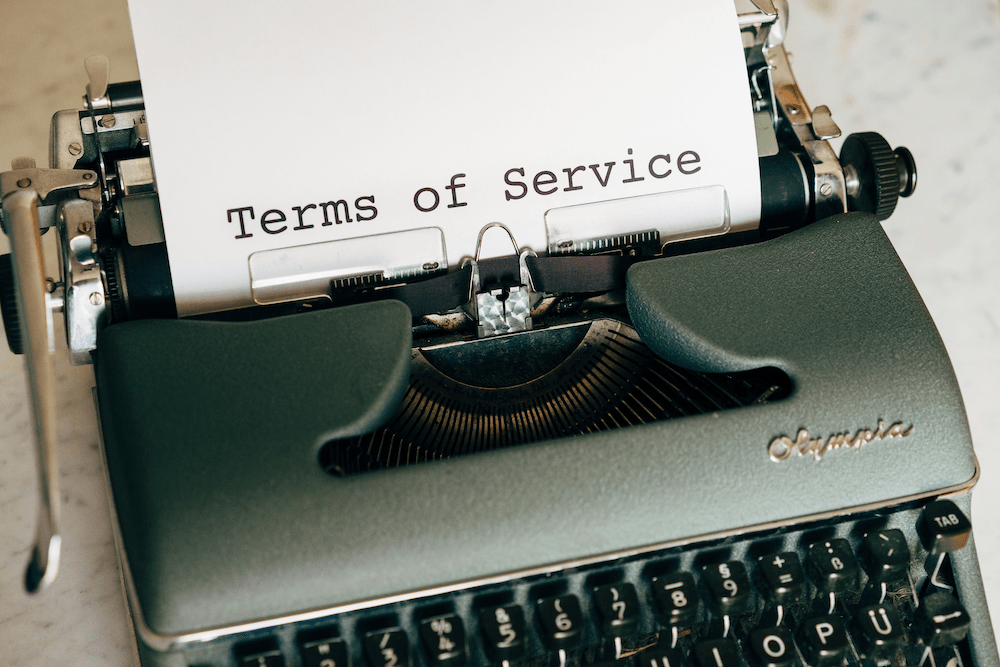
Creating detailed terms and conditions for your online clothing store is important for establishing clear expectations and fostering customer trust.
These guidelines address policies related to returns, payments, user conduct, and privacy, offering both legal safeguards and transparency for your customers.
Understanding how to draft terms and conditions that reflect your store’s operations is required, as it helps minimize disputes and increase confidence.
In this guide, we’ll explore everything from key clauses to practical writing tips, assisting you in creating terms that not only protect your business but also connect with your customers.
Terms and conditions help protect the store legally, make customers feel more secure, and reduce problems.
For example, these rules explain the store’s policies on returning items, getting refunds, and exchanging products, which are very important in clothing sales.
When customers know these rules before buying, they feel better about making a purchase, which can increase sales and reduce people leaving items in their shopping carts.
These terms also protect the store if there are any misunderstandings or customer complaints.
Moreover, they set rules for how orders are handled, which is important when dealing with many items and different shipping options.
Last but not least, terms and conditions let clothing stores tell customers how their personal information will be handled, making customers feel safer.
Creating terms and conditions for your clothing store may feel overwhelming at first, but by breaking it down into manageable steps, it becomes much simpler.
This section offers a practical approach to crafting terms that are comprehensive, easy to read, and customer-friendly.
Each step addresses different aspects, such as defining your objectives, structuring your content, using straightforward language, and consulting legal experts when needed.
By following these 10 steps, you can develop terms and conditions that safeguard your business while providing your customers with a transparent and reliable experience.
Determine the purpose of your terms and conditions. For a clothing store, that typically involves safeguarding your business legally, outlining essential rules, and instilling confidence in your customers.
Once you have a clear goal in mind, you can craft your terms to align with both your objectives and your customer’s interests. This approach establishes clear guidelines and expectations right from the beginning.
Next, identify the key topics to cover, such as user agreements, return policies, shipping details, and payment terms. Each topic should reflect the operations of your store, addressing common inquiries and potential strategies.
By pinpointing these spots, you can ensure that all crucial aspects are addressed, helping to avoid misunderstandings and disputes with customers.
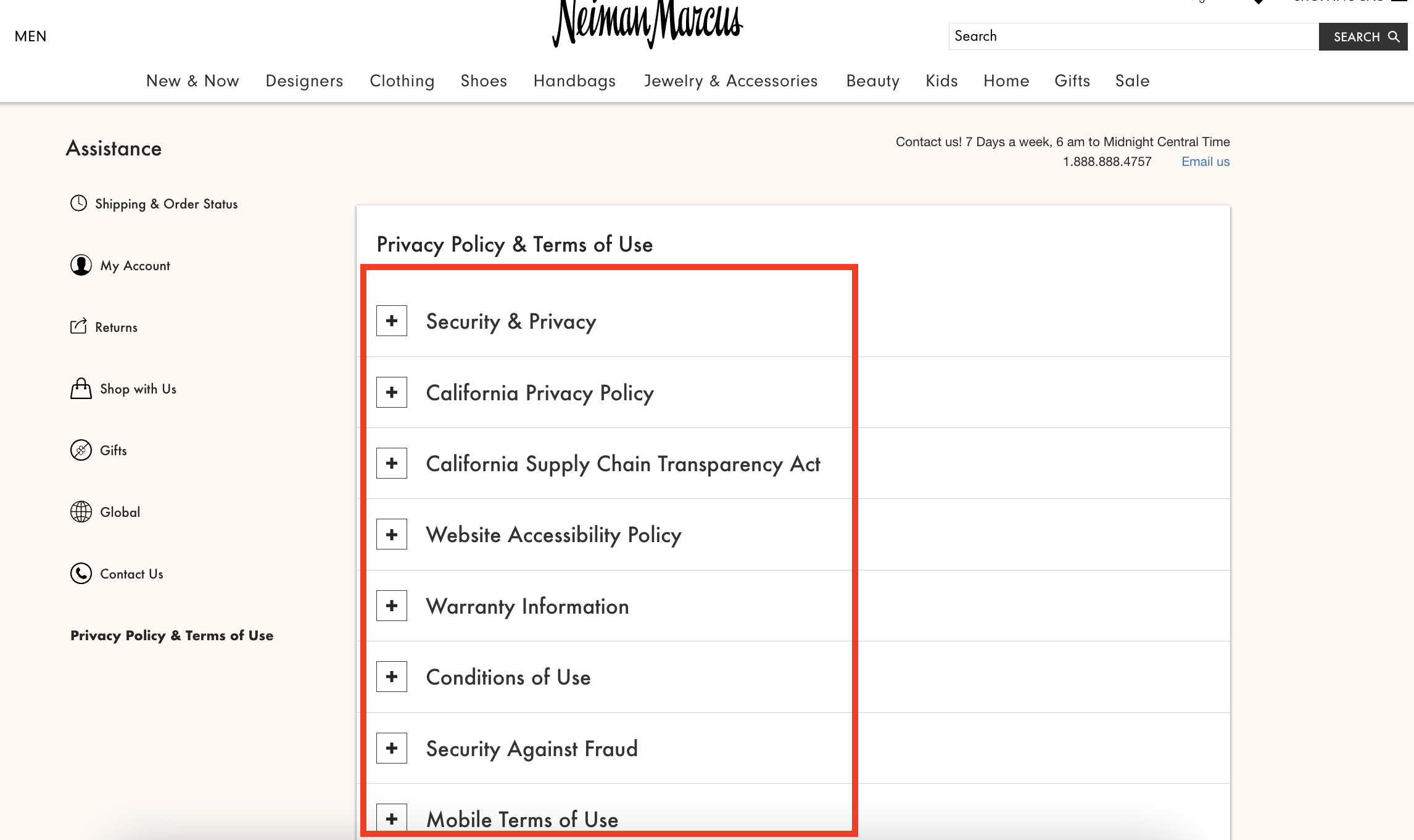
Opt for straightforward language rather than complex legal jargon, making it easier for customers to grasp your policies.
This not only enhances readability but also demonstrates transparency, fostering greater trust in your store as customers will know what to anticipate.
Check out: How to write sales copy?
Consider exploring legal templates or online resources, or consult a professional if needed. While drafting your terms may save money, seeking legal advice ensures that your terms comply with regulations and are tailored to your store’s specific requirements.
Legal experts can also highlight any details you might overlook.
Ensure that the terms and conditions for your store are specifically designed to align with the unique rules and expectations of your clothing business. Depending on the types of apparel you offer, you may need to include more comprehensive guidelines regarding ownership of designs or the return process.
Tailoring your terms to reflect your brand identity helps communicate what your store represents to customers.
Consider the tone you wish to convey in your terms–striking a balance between friendly and professional is often effective for clothing retailers. A consistent tone can enhance readability and comprehension for your customers.
Maintaining a voice that resonates with your brand contributes to a more enjoyable shopping experience.
To promote clarity and openness, include links to other relevant store policies, such as privacy policy and shipping, directly within your terms.
This approach simplifies the process for customers seeking information, allowing them to find everything they need without sifting through multiple pages. It also demonstrates your commitment to transparency, which can boost customer confidence in shopping with you.
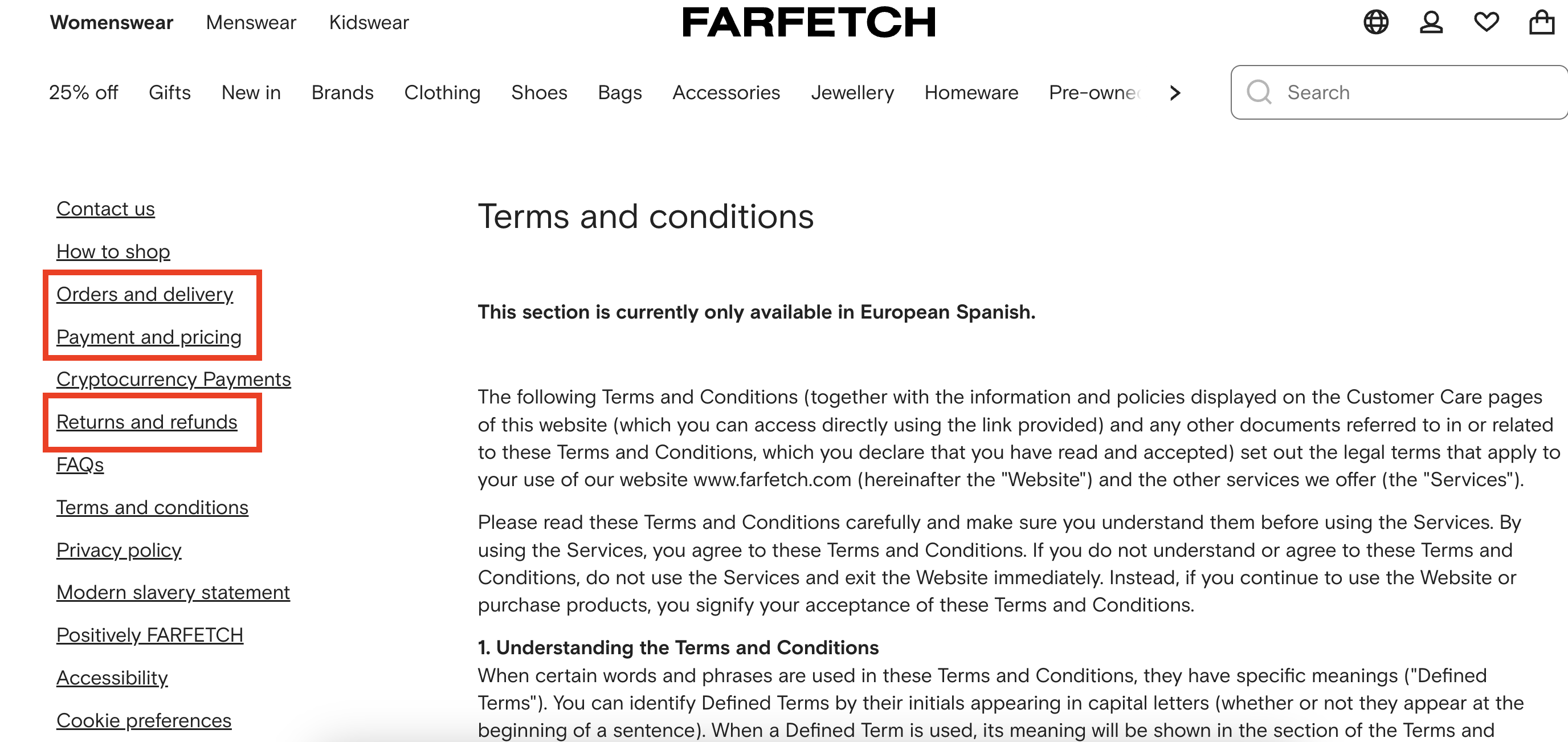
When drafting your terms, utilize subheadings, bullet points, and concise paragraphs to enhance readability.
A well-structured format reflects your store’s attention to detail and increases the probability that customers will engage with and understand your terms.
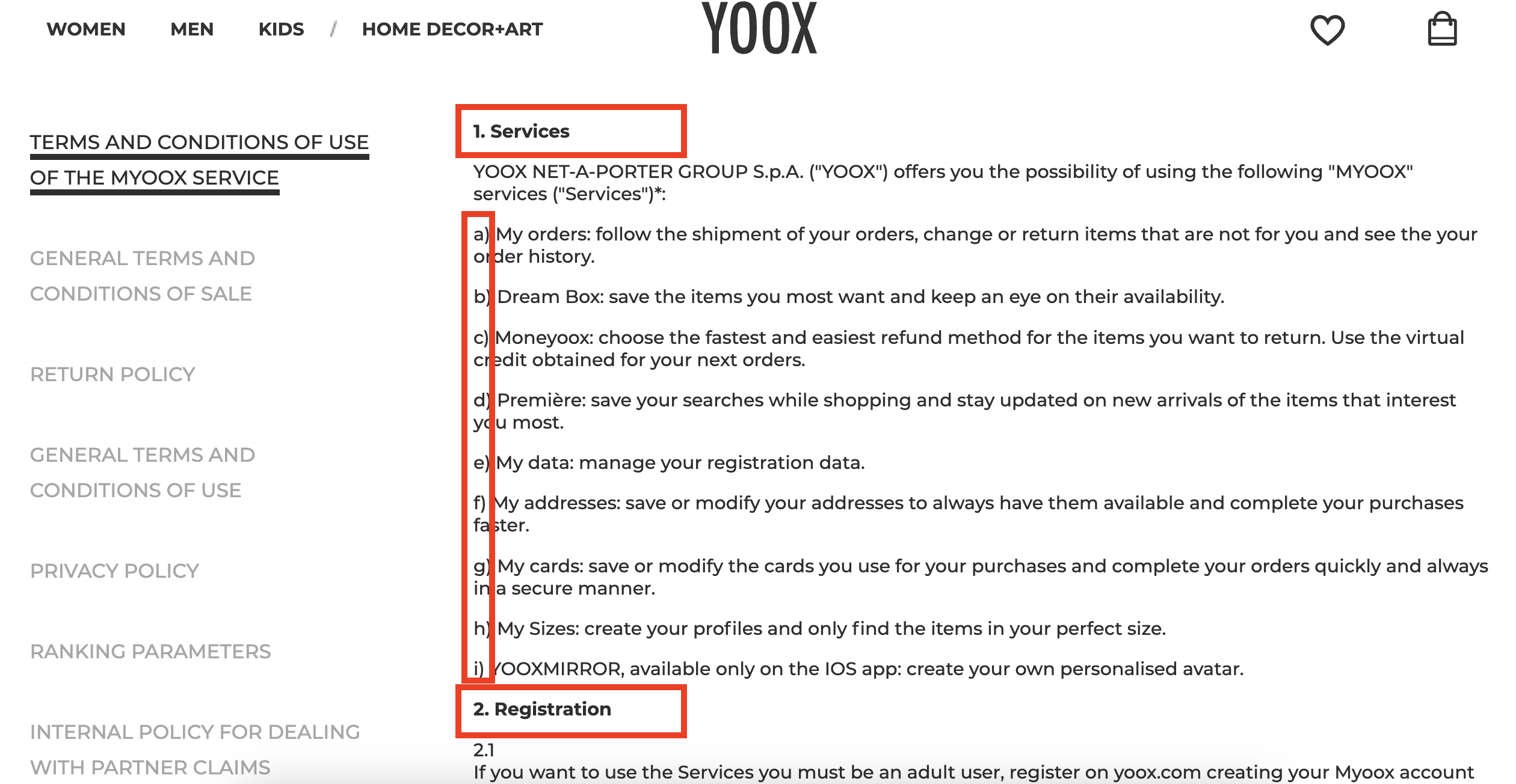
Don’t forget to include the date when your terms were last updated.
This step not only keeps your policies current but also fosters trust with customers, showing that your store is dedicated to maintaining relevant and up-to-date information.
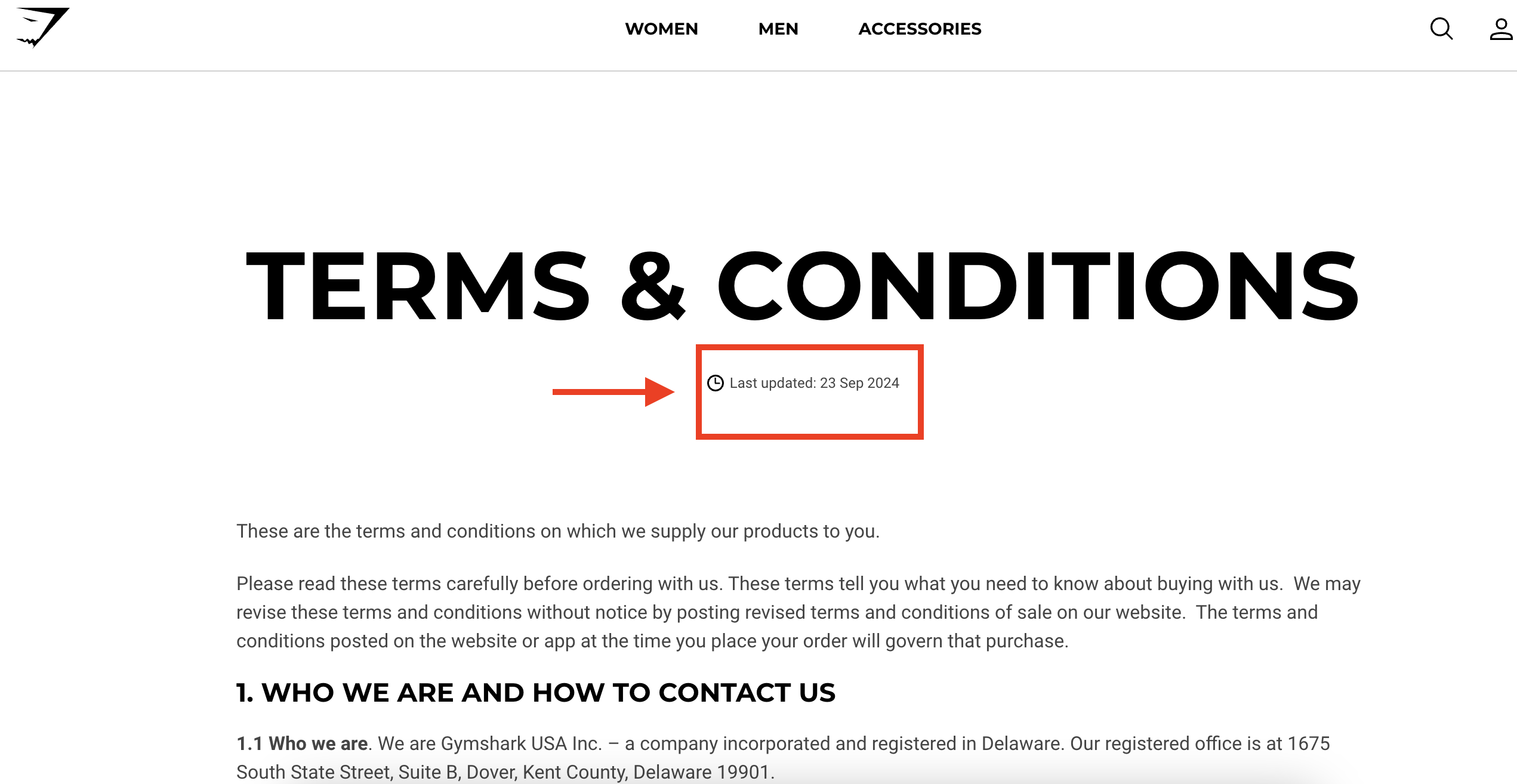
Make sure to place links to your terms and conditions in prominent places, such as the checkout page and the footer of your website.
This makes it easier for customers to find the information they need, which can help avoid misunderstandings. When customers can quickly access the terms, they’re more inclined to read them before making a purchase.
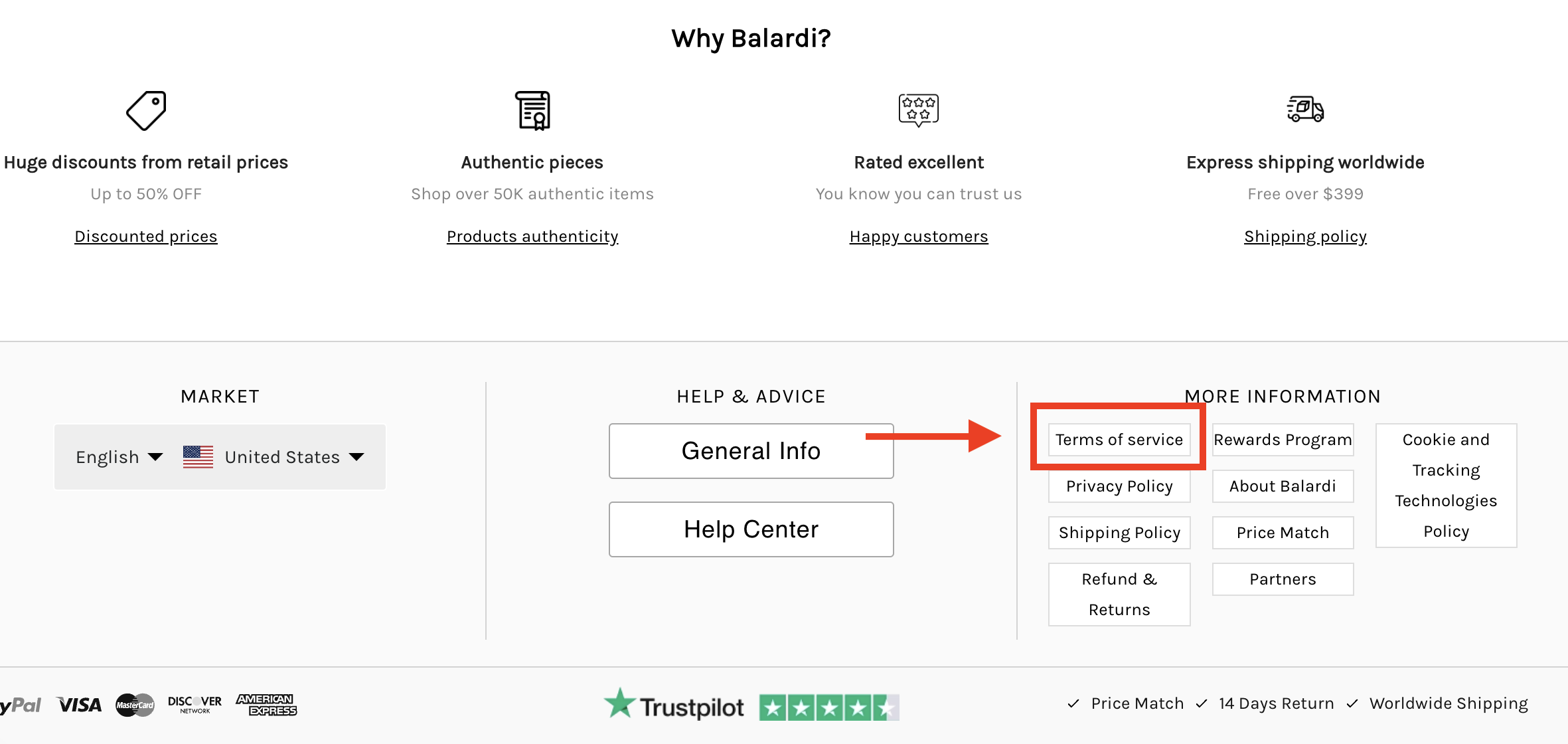
| Section | Description |
|---|---|
| User Agreement | Outlines the rules customers must follow when using the store’s website or making a purchase. |
| Order Process | Details the steps for ordering, cancellations, and possible store-initiated order cancellations. |
| Product Information | Provides product details (sizes, colors) and addresses potential discrepancies like color variations. |
| Shipping and Delivery | Explains shipping methods, delivery times, costs, and how delays or damaged items are handled. |
| Return and Refund Policy | States return conditions, timeframes, and whether exchanges are allowed. |
| Payment Terms | Clarifies accepted payment methods, billing, and security measures. |
| Intellectual Property | Protects the store’s logos, images, and branding from unauthorized use. |
| Privacy and Data Protection | Describes how customer data is collected, used, and protected. |
| Liability Limits | Limits the store’s responsibility for shipping delays or minor product variations. |
| Changing the Terms | Explains how and when the store can update terms and how customers will be notified. |
| Governing Law | Identifies the laws governing the store’s terms and conditions, usually based on the store’s location. |
The user agreement is an important part of the terms and conditions of a clothing store. It lays out the rules that customers need to follow when using the store’s website or making a purchase.
By agreeing to the user agreement, customers are agreeing to follow the store’s policies and rules. This helps avoid disagreements between the store and its customers because everyone knows what’s expected of them from the beginning.
The order process section outlines the steps customers take when making a purchase, from selecting items to receiving a confirmation. It’s essential to clarify the store’s policies regarding order cancellations and modifications so that customers understand how their orders will be managed.
This section typically also addresses scenarios in which the store may need to cancel an order such as when an item is unavailable or if there are fraud concerns, ensuring transparency and fairness.
Customers want to understand details such as sizes and the appearance of the garments before making a purchase. The terms and conditions should clearly state that the store makes every effort to provide precise information about the products, but there may be slight variations, like color differences on screens.
This approach helps the store minimize complaints regarding minor discrepancies and demonstrates transparency in product descriptions to customers.
The shipping policies section of the website should detail the shipping methods used, the estimated delivery time, and the associated costs. Additionally, it’s beneficial to outline the procedures for handling delays, lost packages, or damaged items during transit.
Providing clear information on these aspects helps to minimize customer frustration and sets proper expectations, ultimately enhancing the overall shopping experience.
A transparent return and refund policy is an important part of any clothing store’s terms and conditions page since everyone has unique preferences regarding fit and style. This section of the store’s policies should outline the time frame for returns, the conditions items must be in, and whether exchanges are permitted.
When shoppers are aware that they can easily return items they’re not satisfied with, it boosts their confidence in making purchases. A straightforward return policy can encourage customers to buy more freely without excessive worry.
The payment terms section clarifies the various payment methods available, such as credit cards, or digital wallets. It also informs customers about billing procedures and any potential additional fees.
This part of the store’s policies is crucial for ensuring customers understand how their payments are processed. It also provides an opportunity for the store to reassure customers about the security of their payment information, using measures like encryption or secure payment gateways, which helps foster trust.
For clothing retailers, safeguarding their distinctive logos and designs is a must. This ensures that no one else can use the store’s materials, such as product images, text, and brand names, without authorization.
By clearly defining ownership of these rights, the store can legally defend its brand and prevent others from imitating or misusing its creations.
A good privacy policy will describe how the customer information is collected, used, and kept secure, with examples of the online clothing store’s security precautions.
That openness makes the customers feel more comfortable with the idea that their information is being used responsibly, and therefore they are more likely to shop at the store.
In a store’s terms and conditions, the section on liability limits indicates that the store isn’t accountable for certain issues, such as unexpected shipping delays or minor product variations. This clause helps shield your store from blame for circumstances beyond its control and minimizes excessive complaints.
By clearly outlining these limits, stores ensure that customers have a clear understanding of what to expect, which also helps reduce potential legal troubles.
There are times when stores must update their terms and conditions due to new laws or regulations. This section details when and how these updates can occur, as well as how customers will be informed of any changes. It’s wise for customers to review the terms periodically to stay informed about any modifications.
This approach demonstrates that the store is transparent and responsive to developments in the business landscape.
It’s important to specify the laws that your terms and conditions adhere to, such as the state or country where your business operates. This clarification is crucial for legal transparency, especially if your store spans multiple retail locations or countries with varying laws.
By identifying the governing law, you clarify which regulations are in effect, helping to resolve any issues swiftly and minimizing confusion for both your store and its customers.
Clothing stores should establish clear rules and guidelines, this not only safeguards them legally but also fosters trust with their customers.
By clearly explaining aspects such as return policies, accepted payment methods, and privacy practices, stores can minimize misunderstandings and protect their interests.
When rules are straightforward, customers feel more comfortable shopping there as well.
It’s essential to keep these guidelines current and easy to understand. Developing specific rules is a wise strategy that benefits both your store and your shoppers.
What is dropshipping?